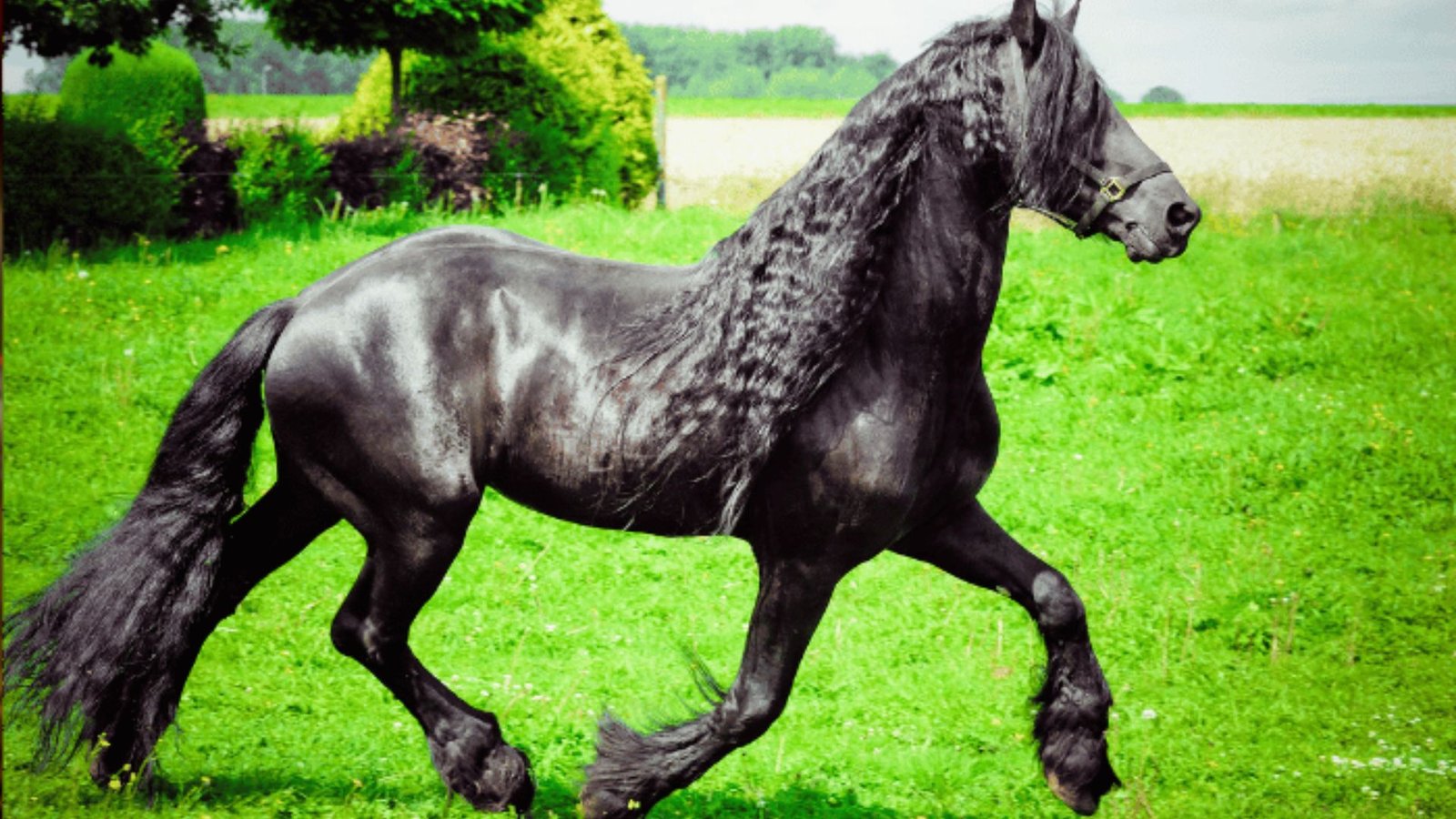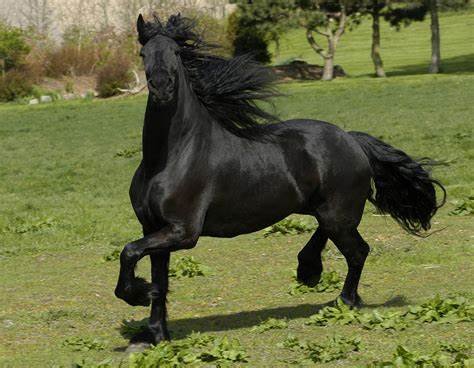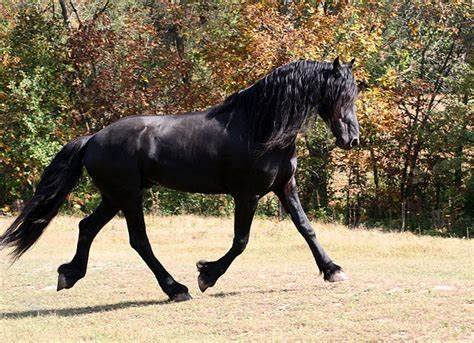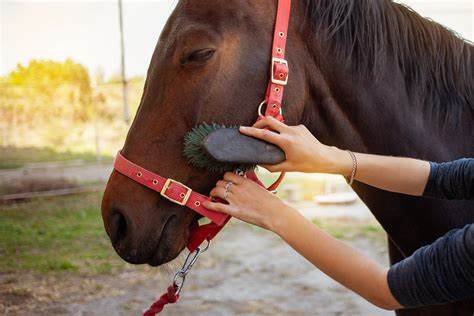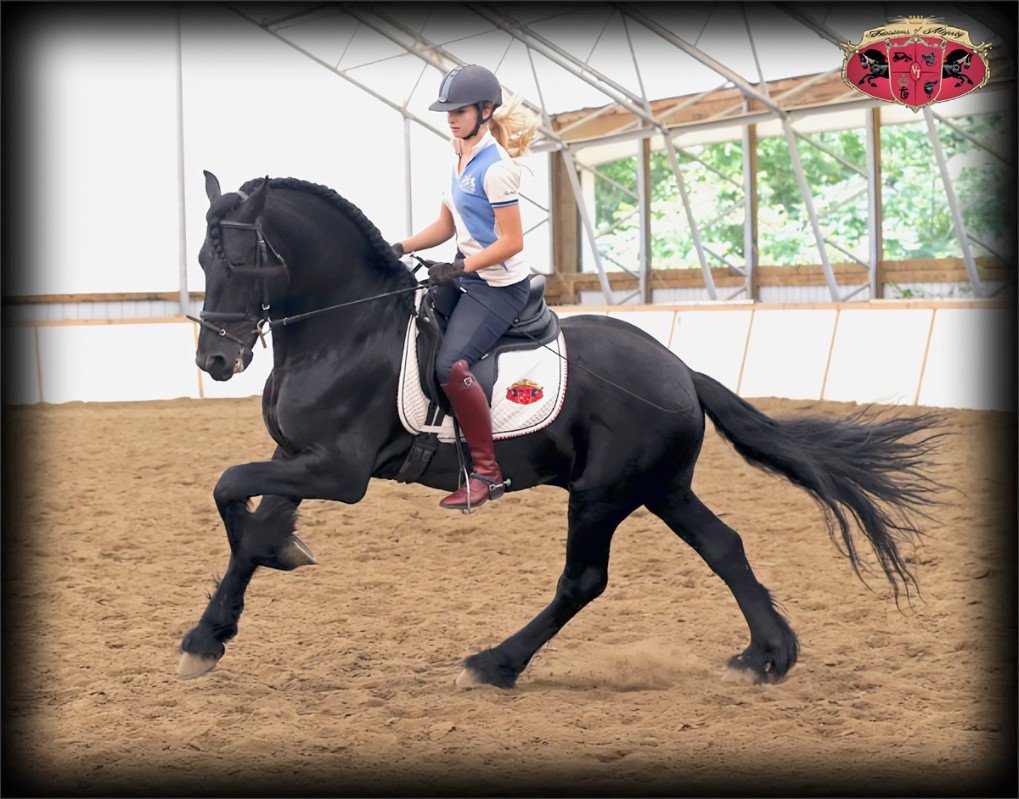Friesian horses are known for their striking black coats, long flowing manes, and regal appearance. However, their beauty is matched by their historic role as powerful war horses. For centuries, Friesians were prized for their strength, agility, and versatility on the battlefield. This article explores the history of Friesian horses in warfare, highlighting their significance and enduring legacy.
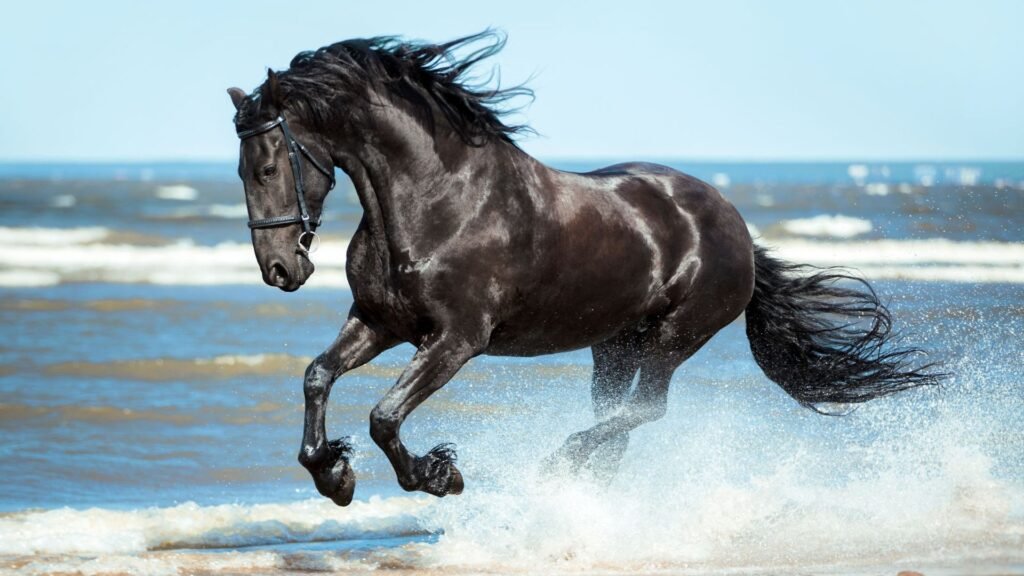
Origins of the Friesian Horse
The Friesian breed originates from Friesland, a province in the Netherlands. These horses trace their lineage back to ancient times, with evidence suggesting their use by the Romans as early as 100 A.D. The breed’s versatility and strength made it an ideal choice for agricultural work, transportation, and, notably, war.
Friesians developed their muscular build and endurance over centuries, traits that were essential for carrying armored knights and heavy equipment during battle.
Friesians in Medieval Warfare
During the Middle Ages, Friesian horses gained prominence as warhorses. Their strong yet agile bodies were perfectly suited for carrying heavily armored knights into combat. Unlike other breeds, Friesians combined the stamina of draft horses with the speed of lighter breeds, making them invaluable on the battlefield.
Their calm temperament was another asset. Friesians were less likely to panic in the chaos of battle, allowing knights to maneuver effectively. Whether charging into battle or retreating under duress, Friesians maintained composure, a critical trait for survival during war.
The Role of Friesians in Crusades
Friesians were heavily used during the Crusades (1095–1291). Knights embarking on these campaigns needed horses capable of enduring long journeys, harsh conditions, and intense combat. Friesians met these demands, serving as reliable companions in grueling environments.
Their strength allowed them to carry both a knight and his extensive armor, which could weigh over 100 pounds. Despite the weight, Friesians maintained their agility, giving knights a tactical advantage in battle.
Friesians in Early Modern Warfare
The 16th and 17th centuries saw significant changes in warfare with the introduction of gunpowder and firearms. While the role of cavalry shifted, Friesian horses remained relevant. They were often used as mounts for officers and ceremonial purposes due to their imposing presence.
Friesians also played a role in pulling artillery and supply wagons across rugged terrain. Their endurance and strength made them indispensable in logistical operations, ensuring armies could transport weapons and provisions effectively.
Symbol of Prestige and Power
Beyond their practical uses in war, Friesian horses became symbols of prestige and power. European nobility and royalty favored the breed for its elegance and strength. They were often paraded during military ceremonies, adding an air of majesty to any event. This dual purpose—war and display—cemented the Friesian’s reputation as a horse of distinction.
Decline and Revival of the Friesian in Warfare
As warfare modernized and mechanized in the 19th and 20th centuries, the role of horses, including Friesians, diminished. Tanks, trucks, and other machinery replaced horses on the battlefield. The Friesian breed faced a decline, nearly disappearing in the early 20th century due to crossbreeding and reduced demand.
However, dedicated breeders in the Netherlands worked to preserve the Friesian horse. While they no longer serve in warfare, Friesians have found new roles in dressage, driving, and entertainment, ensuring their legacy endures.
The Legacy of Friesians in War
The contribution of Friesian horses to warfare extends beyond their physical abilities. They represent the resilience and adaptability of a breed that has served humanity in various capacities over centuries. From carrying knights into battle to pulling artillery, Friesians played a critical role in shaping military history.
Conclusion
Friesian horses have a storied history in warfare, earning their place as one of the most versatile and reliable breeds of their time. Their strength, agility, and temperament made them indispensable on the battlefield, while their striking appearance cemented their status as symbols of power. Though their days in warfare have ended, the legacy of Friesians lives on, reminding us of their vital role in history.







